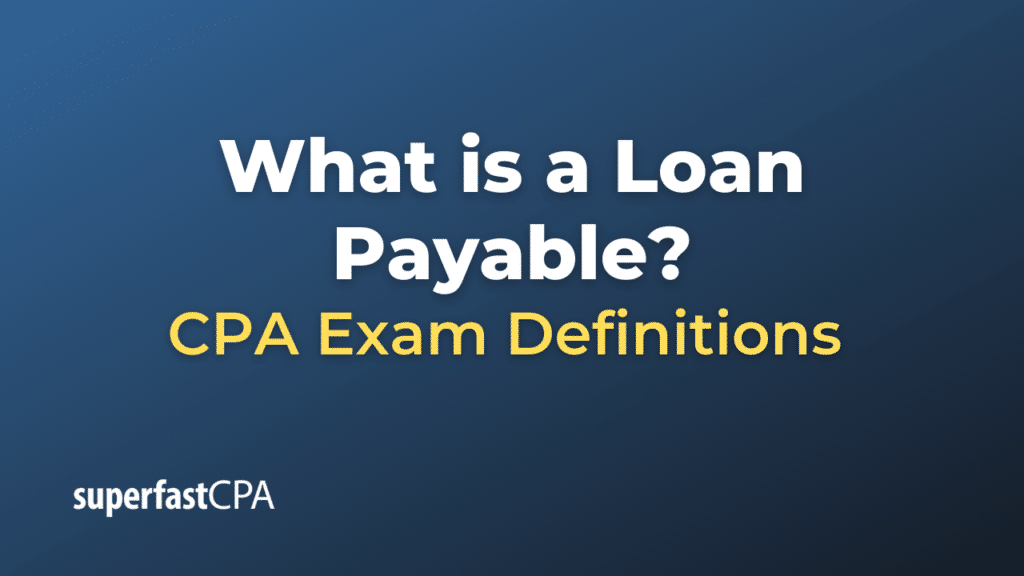Loan Payable
A loan payable is a liability on a company’s balance sheet that represents the amounts the company owes to lenders as a result of borrowing money. The loan is categorized as a payable because it represents an obligation that the company has to pay in the future.
A loan payable can include both the principal amount borrowed and the accrued interest that has yet to be paid. It can be a short-term or long-term liability, depending on the loan’s terms. Short-term loans payable (also known as current portion of long-term debt) are expected to be paid within one year, while long-term loans payable are due in more than one year.
When a company initially takes out a loan, it records a debit (increase) to Cash (or other relevant asset account, if the borrowed funds were not received in cash) and a credit (increase) to Loan Payable, reflecting the increase in its liabilities.
As the company makes payments on the loan, it reduces (debits) the Loan Payable account and also records an expense for the amount of the interest paid.
Example of a Loan Payable
A detailed example to help illustrate the concept of a loan payable.
Let’s say that a small business, DreamHome Furnishings, decides to expand its operations. To finance the expansion, the business takes out a loan of $50,000 from a local bank. The loan terms include a 4% annual interest rate and the loan is to be repaid over five years in annual installments.
Here’s how DreamHome Furnishings would record the loan payable:
- When the loan is obtained:
DreamHome receives $50,000 from the bank. This increases its cash, so it debits its Cash account. At the same time, it has an obligation to pay back the bank, so it credits its Loans Payable account. The journal entry is:- Debit: Cash $50,000
- Credit: Loan Payable $50,000
- At the end of the first year:
DreamHome needs to make an annual repayment. Let’s say the annual repayment (principal and interest) amounts to $11,218. Out of this, $10,000 is the principal repayment and $1,218 is the interest for the year.The business reduces its Cash account by the amount of the payment, and it also reduces the Loan Payable account by the principal repayment amount. The interest portion is recorded as Interest Expense. The journal entries are:- Debit: Loan Payable $10,000
- Debit: Interest Expense $1,218
- Credit: Cash $11,218
After the first payment, the Loan Payable account balance will be $40,000 ($50,000 original loan – $10,000 principal repayment), representing the remaining principal amount to be repaid. The Interest Expense of $1,218 will appear on DreamHome’s income statement, reducing its net income for the year.
This process repeats each year until the loan is fully paid off. Note that as the loan balance decreases with each repayment, the interest portion of the payment also decreases, and the principal portion increases.













